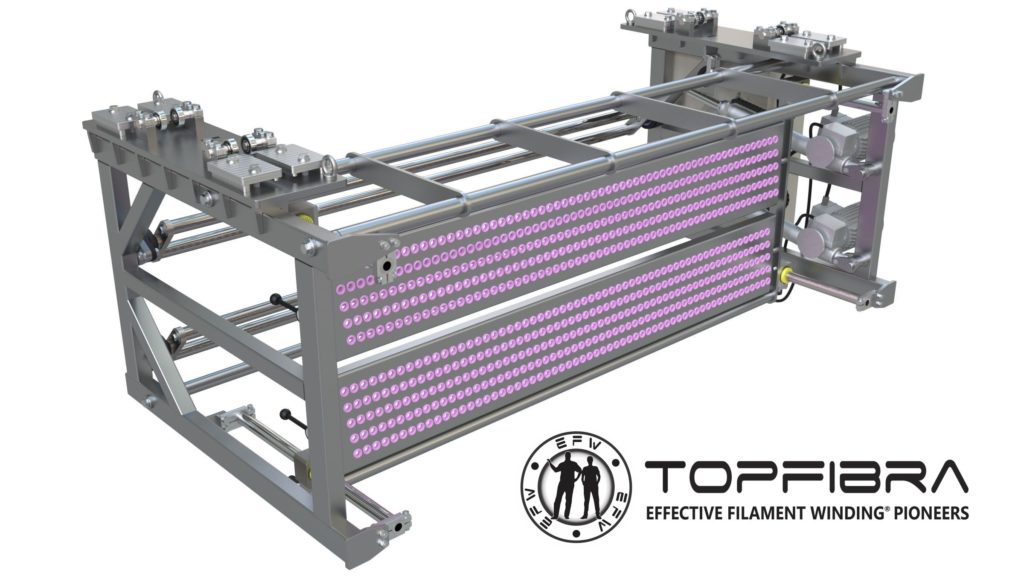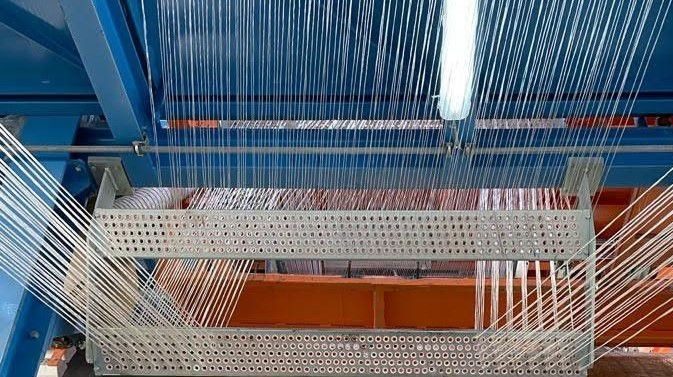Discover what effects the physical and mechanical properties of your GRP pipes can have and how they could boost your business profit.
During the past years, several studies have been undertaken to investigate the influence of the applied tow tension, during filament winding, on the physical and mechanical properties of glass-fibre reinforced pipes.
The main objective was to increase the performance of the laminate with the same quantity of fibers, lowering the cost of the final product.
The equation is simple:Coming back to the conclusions of the study:
-
- Increasing the filament winding tow tension significantly increased fibre compaction; thus, the primary processing parameter ‘winding tension’ is suited for controlling the fibre volume fraction of the manufactured components;
-
- Mechanical testing revealed that stresses at functional and structural failure depend on the applied winding tension.
In simple words: you need to control the fiber tension!
How can you be more efficient?
Are you still manually tensioning the hoop fibers in your CFW machine?
If the answer is YES, then you are most probably overdosing your pipe to get the required specifications and your profit is disappearing inside your pipe laminate.
Moreover, if you measure and control your Hoop Fiber tension during production, you will avoid:
-
- Resin overdosing, causing higher costs and lower pipe technical specifications;
-
- Fiber buckling;
-
- Possible delaminations.
Therefore, your plant urgently needs our PLC hoop fiber tension control and online hoop fiber tension measurement.

If your machine is already a few years old and you are concerned about the control, we can install the PLC hoop fiber tension control and online hoop fiber tension measurement as a “stand-alone” system!
Do not wait another month losing more than 100.000 USD. All you have to do is click on the following link and ask for a free conference call with our support team.
Get in touch now to request your free consultation
You might be also interested to know how to achieve maximum plant efficiency by eliminating downtimes.
Coming back to the conclusions of the study:
-
- Increasing the filament winding tow tension significantly increased fibre compaction; thus, the primary processing parameter ‘winding tension’ is suited for controlling the fibre volume fraction of the manufactured components;
-
- Mechanical testing revealed that stresses at functional and structural failure depend on the applied winding tension.
In simple words: you need to control the fiber tension!
How can you be more efficient?
Are you still manually tensioning the hoop fibers in your CFW machine?
If the answer is YES, then you are most probably overdosing your pipe to get the required specifications and your profit is disappearing inside your pipe laminate.
Moreover, if you measure and control your Hoop Fiber tension during production, you will avoid:
-
- Resin overdosing, causing higher costs and lower pipe technical specifications;
-
- Fiber buckling;
-
- Possible delaminations.
Therefore, your plant urgently needs our PLC hoop fiber tension control and online hoop fiber tension measurement.

If your machine is already a few years old and you are concerned about the control, we can install the PLC hoop fiber tension control and online hoop fiber tension measurement as a “stand-alone” system!
Do not wait another month losing more than 100.000 USD. All you have to do is click on the following link and ask for a free conference call with our support team.
Get in touch now to request your free consultation
You might be also interested to know how to achieve maximum plant efficiency by eliminating downtimes.
[/et_pb_text][/et_pb_column][/et_pb_row][/et_pb_section]YOU SAVE 132.000 USD IN 20 DAYS!
Coming back to the conclusions of the study:
-
- Increasing the filament winding tow tension significantly increased fibre compaction; thus, the primary processing parameter ‘winding tension’ is suited for controlling the fibre volume fraction of the manufactured components;
-
- Mechanical testing revealed that stresses at functional and structural failure depend on the applied winding tension.
In simple words: you need to control the fiber tension!
How can you be more efficient?
Are you still manually tensioning the hoop fibers in your CFW machine?
If the answer is YES, then you are most probably overdosing your pipe to get the required specifications and your profit is disappearing inside your pipe laminate.
Moreover, if you measure and control your Hoop Fiber tension during production, you will avoid:
-
- Resin overdosing, causing higher costs and lower pipe technical specifications;
-
- Fiber buckling;
-
- Possible delaminations.
Therefore, your plant urgently needs our PLC hoop fiber tension control and online hoop fiber tension measurement.

If your machine is already a few years old and you are concerned about the control, we can install the PLC hoop fiber tension control and online hoop fiber tension measurement as a “stand-alone” system!
Do not wait another month losing more than 100.000 USD. All you have to do is click on the following link and ask for a free conference call with our support team.
Get in touch now to request your free consultation
You might be also interested to know how to achieve maximum plant efficiency by eliminating downtimes.
[/et_pb_text][/et_pb_column][/et_pb_row][/et_pb_section]Higher performance = less cost = more profit.
Let me first share some insight with you of an experimental study carried out by P. Mertiny and F. Ellyin at the Advanced Composite Materials Engineering Group, Department of Mechanical Engineering, University of Alberta in Canada.
In this experimental investigation, tubular specimens were tested under different loading ratios, the stress/strain response was recorded, and functional and structural failure envelopes were developed. The mechanical properties were analyzed in conjunction with the measured physical properties: ‘fibre volume fraction’ and ‘effective wall thickness’.
How to calculate the savings?
Before I outline the conclusion let me ask you a question:
Do you know what a saving of 5% means in the production cost of a large-diameter GRP pipe?
At first thought, 5% may seem like a small percentage, but if we convert the percentage in USD…
Imagine that your Plant is producing a pipe with a weight of 600 kg/m and that you are producing at an average rate of 10 m/hour. This means 6.000 kg/hour. Simple maths.
Addressing only the raw material cost (I will not consider the raw material handling and financial costs), we could easily say that your cost is 5.500 USD/hour (yes, I know, it also depends on the pipe pressure and stiffness, but let’s assume an average situation).
Ok, so now let’s take a production scenario with a raw material cost of 5.500 USD/hr = 132.000 USD /day.
Now, let’s assume that we will produce continuously for 20 days.
132.000 USD/DAY x 20 DAYS = 2.640.000 USD/20 days.
And now let’s imagine that you upgrade your equipment and get a 5% saving:
2.640.000 USD/20 DAY x 5% = 132.000 USD/20 DAYS.
YOU SAVE 132.000 USD IN 20 DAYS!
Coming back to the conclusions of the study:
-
- Increasing the filament winding tow tension significantly increased fibre compaction; thus, the primary processing parameter ‘winding tension’ is suited for controlling the fibre volume fraction of the manufactured components;
-
- Mechanical testing revealed that stresses at functional and structural failure depend on the applied winding tension.
In simple words: you need to control the fiber tension!
How can you be more efficient?
Are you still manually tensioning the hoop fibers in your CFW machine?
If the answer is YES, then you are most probably overdosing your pipe to get the required specifications and your profit is disappearing inside your pipe laminate.
Moreover, if you measure and control your Hoop Fiber tension during production, you will avoid:
-
- Resin overdosing, causing higher costs and lower pipe technical specifications;
-
- Fiber buckling;
-
- Possible delaminations.
Therefore, your plant urgently needs our PLC hoop fiber tension control and online hoop fiber tension measurement.

If your machine is already a few years old and you are concerned about the control, we can install the PLC hoop fiber tension control and online hoop fiber tension measurement as a “stand-alone” system!
Do not wait another month losing more than 100.000 USD. All you have to do is click on the following link and ask for a free conference call with our support team.
Get in touch now to request your free consultation
You might be also interested to know how to achieve maximum plant efficiency by eliminating downtimes.
[/et_pb_text][/et_pb_column][/et_pb_row][/et_pb_section]
